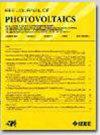Experimental and Simulated Performance Evaluation of Bifacial Photovoltaic Floating System With a Horizontal Single-Axial Tracker
IF 2.6
3区 工程技术
Q3 ENERGY & FUELS
引用次数: 0
Abstract
The rapid expansion of photovoltaics is driven by significant reduction in costs. However, given the surface requirements for photovoltaic development, utilizing water surfaces for floating photovoltaic (FPV) systems presents a promising solution. To enhance the cost-effectiveness of these systems, bifacial modules and tracking systems can be employed. While numerous experimental studies have evaluated the performance of fixed-configuration FPVs, floating tracking configurations remain underexplored. In addition, various simulation tools offer insights into different configurations, but their different assumptions often yield inconsistent results. This study focuses on the experimental evaluation of a horizontal axis tracking bifacial FPV (HT-bFPV) system. Over one year, the HT-bFPV system was monitored at the FPV test bed of “Enel Innovation Hub & Lab” in Catania, Italy. The experimental results were compared with simulated outcomes using two software tools, to assess their precision in calculating the HT-bFPV performances. The results reveal that the module temperature of the HT-bFPV system is 3 °C to 6 °C lower than the temperatures calculated by System Advisor Model and Photovoltaic system software, respectively. The yearly reference yield of 2139 kWh/kW produced a final yield of 1801 kWh/kW. The yearly performance ratio of the HT-bFPV system was 0.86, which improved by 1.8% when adjusted for temperature. The simulation results closely matched the experimental data, validating the system's performance. Furthermore, it was confirmed that the HT-bFPV system can produce up to 13.3% more energy with more potential in sites with higher latitudes compared with a similar fixed system.基于水平单轴跟踪器的双面光伏漂浮系统的实验与仿真性能评估
光伏发电的快速扩张是由成本的显著降低所驱动的。然而,考虑到光伏发展对水面的要求,利用水面进行浮动光伏(FPV)系统是一个很有前途的解决方案。为了提高这些系统的成本效益,可以采用双面模块和跟踪系统。虽然已有大量实验研究评估了固定配置fpv的性能,但浮动跟踪配置仍未得到充分探索。此外,各种模拟工具提供了对不同配置的见解,但它们的不同假设通常会产生不一致的结果。本文研究了一种水平轴跟踪双面FPV (HT-bFPV)系统的实验评价。在一年多的时间里,HT-bFPV系统在意大利卡塔尼亚的“Enel创新中心和实验室”的FPV试验台进行了监测。使用两种软件工具将实验结果与模拟结果进行比较,以评估它们在计算HT-bFPV性能方面的精度。结果表明,HT-bFPV系统的组件温度比系统顾问模型和光伏系统软件计算的温度分别低3℃~ 6℃。年参考发电量为2139千瓦时/千瓦,最终发电量为1801千瓦时/千瓦。HT-bFPV系统的年性能比为0.86,调整温度后提高1.8%。仿真结果与实验数据吻合较好,验证了系统的性能。此外,与类似的固定系统相比,在高纬度地区,HT-bFPV系统可以产生高达13.3%的能量,具有更大的潜力。
本文章由计算机程序翻译,如有差异,请以英文原文为准。
求助全文
约1分钟内获得全文
求助全文
来源期刊

IEEE Journal of Photovoltaics
ENERGY & FUELS-MATERIALS SCIENCE, MULTIDISCIPLINARY
CiteScore
7.00
自引率
10.00%
发文量
206
期刊介绍:
The IEEE Journal of Photovoltaics is a peer-reviewed, archival publication reporting original and significant research results that advance the field of photovoltaics (PV). The PV field is diverse in its science base ranging from semiconductor and PV device physics to optics and the materials sciences. The journal publishes articles that connect this science base to PV science and technology. The intent is to publish original research results that are of primary interest to the photovoltaic specialist. The scope of the IEEE J. Photovoltaics incorporates: fundamentals and new concepts of PV conversion, including those based on nanostructured materials, low-dimensional physics, multiple charge generation, up/down converters, thermophotovoltaics, hot-carrier effects, plasmonics, metamorphic materials, luminescent concentrators, and rectennas; Si-based PV, including new cell designs, crystalline and non-crystalline Si, passivation, characterization and Si crystal growth; polycrystalline, amorphous and crystalline thin-film solar cell materials, including PV structures and solar cells based on II-VI, chalcopyrite, Si and other thin film absorbers; III-V PV materials, heterostructures, multijunction devices and concentrator PV; optics for light trapping, reflection control and concentration; organic PV including polymer, hybrid and dye sensitized solar cells; space PV including cell materials and PV devices, defects and reliability, environmental effects and protective materials; PV modeling and characterization methods; and other aspects of PV, including modules, power conditioning, inverters, balance-of-systems components, monitoring, analyses and simulations, and supporting PV module standards and measurements. Tutorial and review papers on these subjects are also published and occasionally special issues are published to treat particular areas in more depth and breadth.
 求助内容:
求助内容: 应助结果提醒方式:
应助结果提醒方式:


